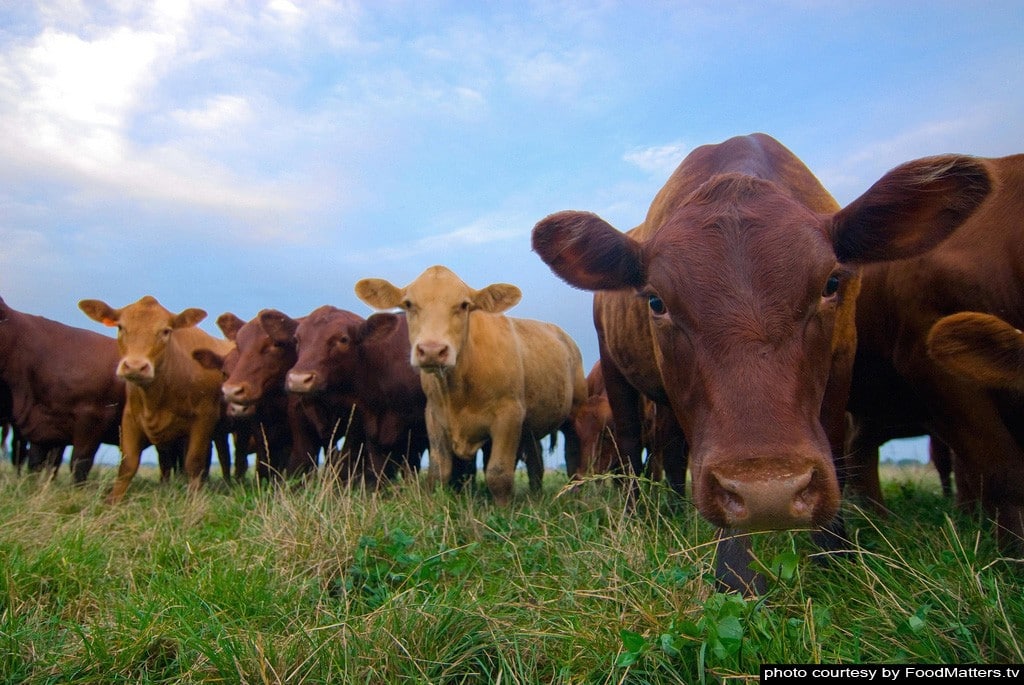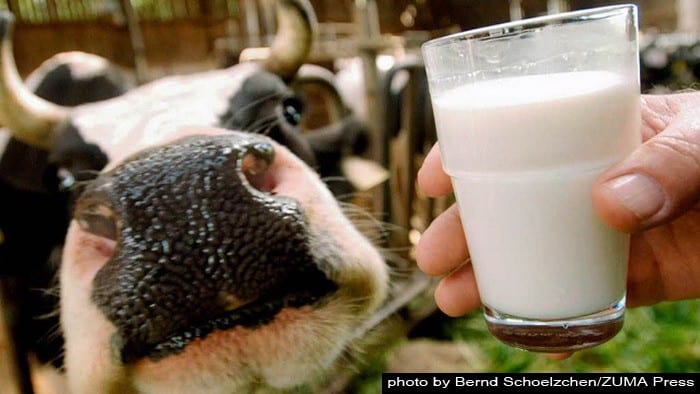When scanning the milk isle at the grocery store, one typically comes across many choices regarding which brand or type of milk to buy. There’s 2% Milk, Nonfat Milk, Low Fat Milk, Whole Milk, Soy Milk, Rice Milk, Almond Milk, Organic Milk, etc. If all these choices weren’t overwhelming enough, another milk option has recently formulated a large buzz. Raw milk’s influx of support and popularity has attracted a lot of attention among milk users.
Pasteurized vs. Raw Milk
According to an article by Chris Kresser, a practitioner of integrative medicine, there is a wide variety of beneficial reasons why people have switched to raw milk. One major motive Kresser addresses is the nutritional benefits that raw milk provides.
Cows that are raised eating natural, fresh grass produce more essential fatty acids in their milk than cows that are simply fed grain. They also live longer and are not forced to undergo the harsh conditions involved in “factory farms.” This adjustment in the cow’s diet makes a big difference in how the milk is developed and ensures that the cows are raised properly. Therefore, unpasteurized milk maintains more vitamins and minerals in general.
According to naturopathic physician, Ron Schmid, raw milk is also a good source of enzymes that are very important in maintaining health and strengthening the immune system. Realmilk.com elaborates on other nutritional problems involved in pasteurization. Pasteurization began in the United States during the 1920s and its popularity spread completely by 1950 (Centers for Disease and Control Prevention). It led to a reduction in human illnesses and was viewed as an effective food safety intervention. Traditional pasteurization involves heating milk to 161˚F for 15 seconds, which removes the bacteria in milk and gives the milk 16-21 days on the shelf from when it was packaged (Organic Valley).
The process of pasteurization, however, prevents access to the natural nutrients in raw milk such as folate, vitamin B12, vitamin B6, vitamin D, vitamin A, iron, and iodine. Raw milk, on the other hand, not only has access to these beneficial nutrients, but also promotes better growth outcomes in children and is known to be more accessible to those who are lactose intolerant.
Is Raw Milk Healthier?
The long-term benefits of raw milk have also been studied and thoroughly examined by certain researchers. In one instance, physician Francis Pottenger completed the “Pottenger Cat Study” (1932-1942) where an experimental group of cats were fed raw milk and compared to a controled group of cats that were fed pasteurized milk. The results, compiled over four generations of cats, showed that the felines who consumed the raw milk had many generations of healthy offspring to follow. The cats who consumed the pasteurized milk, however, decreased their reproduction capacity and were more prone to obtaining certain diseases. This study reveals the tangible and beneficial solutions that are brought about by drinking raw milk.

The circulation of raw milk has additionally become beneficial to the local farms that are able to produce and sell it. In this exchange, local farms are able to make a profit due to the limited availability and high demand for raw milk. This economic reasoning is precisely why some raw milk fans made the definitive switch.
Are you ready to go raw?
Before committing to switching ones diet to solely raw milk, however, it is important to recognize the potential risks that could occur. Kresser states the real possibility that there is a 1 in 94,000 chance of becoming ill from drinking raw milk. In the past five years, there has not been a comprehensive list of outbreaks linked to raw milk, but a list of highlights related to these outbreaks can be found at this link: Marler Blog. These diseases caused by unpasteurized milk can be identified as salmonella and campylobacter. Alone, these diseases are not generally detrimental to one’s health, but could be incredibly damaging if paired with existing malignant conditions.
Despite these recorded diseases that stem from raw milk, pasteurized milk has also caused documented illnesses. There is a 1 in 880,000 chance that a person could become ill from drinking pasteurized milk (Kresser). Although the risk from drinking unpasteurized milk is 9.4% higher, the absolute risk is extremely small. There are much bigger risks regarding foodborne diseases triggered by seafood, produce, and poultry (Center for Science in the Public Interest).
The discussion surrounding raw milk has changed the way many people look at this product and the way that it is made. It is important to understand the way our food is developed before we consume it. When considering switching to raw milk, find out if your town even allows residents to purchase the product. Contact local farms and inquire if they produce raw milk and how exactly they prepare it.
Unlike the process of pasteurization where milk gets shipped to a creamery, raw milk comes directly from the animal that is producing it. There are ways, however, that farmers can educate themselves to ensure that the raw milk is produced safely (Tim Wightman). First, there are basic fundamentals to breeding and raising a dairy cow. Caring for the cow and feeding it properly ensures that the animal will be healthy and produce a purer product. Then, there are proper techniques to use when milking. It is important to have a clean space and good sanitation. Finally, there is the storing and testing of the milk. Raw milk should be kept at the temperature of 36-38˚F. Under these conditions, raw milk can be expected to last from seven to ten days (raw-milk-facts.com).
Because the processes of producing raw milk and pasteurized milk are different, the products contain distinct elements within the milk itself. Raw milk may be more susceptible to containing certain bacteria, but it is also able to maintain more vitamins and nutrients than pasteurized milk. To discover which type of milk is best for you and your family, learn more about the products’ various differences and its availability in your community.


